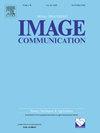High efficiency deep image compression via channel-wise scale adaptive latent representation learning
IF 2.7
3区 工程技术
Q2 ENGINEERING, ELECTRICAL & ELECTRONIC
引用次数: 0
Abstract
Recent learning based neural image compression methods have achieved impressive rate–distortion (RD) performance via the sophisticated context entropy model, which performs well in capturing the spatial correlations of latent features. However, due to the dependency on the adjacent or distant decoded features, existing methods require an inefficient serial processing structure, which significantly limits its practicability. Instead of pursuing computationally expensive entropy estimation, we propose to reduce the spatial redundancy via the channel-wise scale adaptive latent representation learning, whose entropy coding is spatially context-free and parallelizable. Specifically, the proposed encoder adaptively determines the scale of the latent features via a learnable binary mask, which is optimized with the RD cost. In this way, lower-scale latent representation will be allocated to the channels with higher spatial redundancy, which consumes fewer bits and vice versa. The downscaled latent features could be well recovered with a lightweight inter-channel upconversion module in the decoder. To compensate for the entropy estimation performance degradation, we further develop an inter-scale hyperprior entropy model, which supports the high efficiency parallel encoding/decoding within each scale of the latent features. Extensive experiments are conducted to illustrate the efficacy of the proposed method. Our method achieves bitrate savings of 18.23%, 19.36%, and 27.04% over HEVC Intra, along with decoding speeds that are 46 times, 48 times, and 51 times faster than the baseline method on the Kodak, Tecnick, and CLIC datasets, respectively.
通过信道尺度自适应潜表征学习实现高效深度图像压缩
近期基于学习的神经图像压缩方法通过复杂的上下文熵模型实现了令人印象深刻的速率-失真(RD)性能,该模型在捕捉潜在特征的空间相关性方面表现出色。然而,由于依赖于相邻或相距较远的解码特征,现有方法需要低效的串行处理结构,这大大限制了其实用性。我们建议通过信道尺度自适应潜表征学习来减少空间冗余,而不是追求计算成本高昂的熵估计,其熵编码是无空间上下文且可并行处理的。具体来说,建议的编码器通过可学习的二进制掩码自适应地确定潜在特征的尺度,并根据 RD 成本对其进行优化。这样,较低尺度的潜在表示将分配给空间冗余度较高的信道,从而减少比特消耗,反之亦然。解码器中的轻量级信道间上变频模块可以很好地恢复降尺度潜特征。为了弥补熵估计性能的下降,我们进一步开发了一种跨尺度超优先熵模型,它支持在潜特征的每个尺度内进行高效的并行编码/解码。我们进行了大量实验,以说明所提方法的功效。在柯达、Tecnick 和 CLIC 数据集上,我们的方法比 HEVC Intra 分别节省了 18.23%、19.36% 和 27.04% 的比特率,解码速度比基准方法分别快 46 倍、48 倍和 51 倍。
本文章由计算机程序翻译,如有差异,请以英文原文为准。
求助全文
约1分钟内获得全文
求助全文
来源期刊

Signal Processing-Image Communication
工程技术-工程:电子与电气
CiteScore
8.40
自引率
2.90%
发文量
138
审稿时长
5.2 months
期刊介绍:
Signal Processing: Image Communication is an international journal for the development of the theory and practice of image communication. Its primary objectives are the following:
To present a forum for the advancement of theory and practice of image communication.
To stimulate cross-fertilization between areas similar in nature which have traditionally been separated, for example, various aspects of visual communications and information systems.
To contribute to a rapid information exchange between the industrial and academic environments.
The editorial policy and the technical content of the journal are the responsibility of the Editor-in-Chief, the Area Editors and the Advisory Editors. The Journal is self-supporting from subscription income and contains a minimum amount of advertisements. Advertisements are subject to the prior approval of the Editor-in-Chief. The journal welcomes contributions from every country in the world.
Signal Processing: Image Communication publishes articles relating to aspects of the design, implementation and use of image communication systems. The journal features original research work, tutorial and review articles, and accounts of practical developments.
Subjects of interest include image/video coding, 3D video representations and compression, 3D graphics and animation compression, HDTV and 3DTV systems, video adaptation, video over IP, peer-to-peer video networking, interactive visual communication, multi-user video conferencing, wireless video broadcasting and communication, visual surveillance, 2D and 3D image/video quality measures, pre/post processing, video restoration and super-resolution, multi-camera video analysis, motion analysis, content-based image/video indexing and retrieval, face and gesture processing, video synthesis, 2D and 3D image/video acquisition and display technologies, architectures for image/video processing and communication.
 求助内容:
求助内容: 应助结果提醒方式:
应助结果提醒方式:


